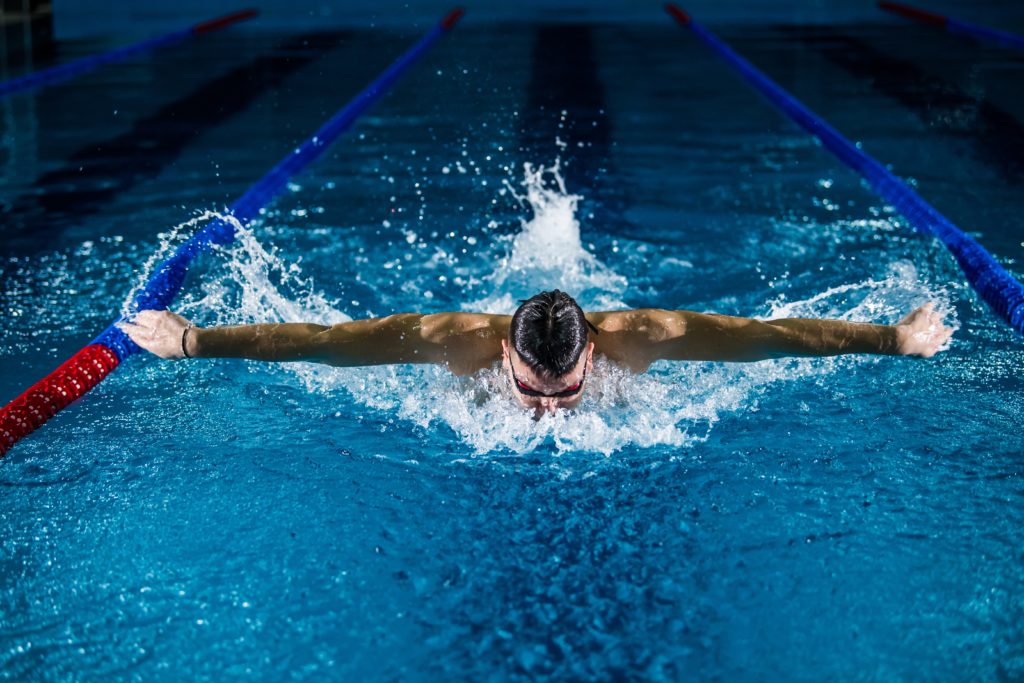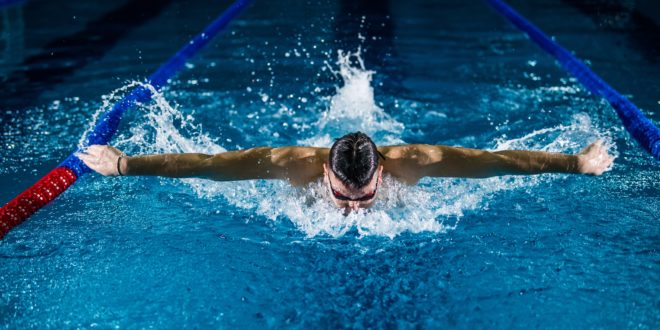Risk of injury often keeps older adults from diving into sports and fitness activities outside of their comfort zone. Understandably, the idea of incurring an injury which requires treatment, medical or surgical, as well as recovery time and potentially even physical therapy could put anyone, young or old, off riskier exercises for good.
If you find yourself in search of low-risk, low-impact exercise, it might be time to seriously consider swimming.

Benefits of swimming
You likely already know that swimming offers a unique opportunity to engage in low-impact exercise that is easy on the joints but still generates a beneficial cardio workout. Did you also know research shows people who swim regularly live longer?
That’s right. A 2017 study released by Swim England which followed over 80,000 people found that those who swam regularly had a 28% lower rate of early death than people who didn’t. The report also found that routine swimming helped adults lower their stress levels and promoted greater physical and mental agility.
But what if you are currently managing a long-term health condition? A number of older adults in New Zealand live with chronic health conditions that may make it more difficult to engage in moderate and vigorous-intensity exercise. Common long-term health conditions include obesity, arthritis, diabetes, and heart disease. Can swimming benefit these groups of people? Absolutely!
Not only does swimming help prevent the onset of chronic illness, but it can relieve anxiety, diminish pain, and burn off excess weight often associated with long-term conditions. In addition to fortifying the body against muscle loss, decreased bone density, and illness, swimming can also help with important things like lung capacity, coordination, and even posture.
The deep and regulated breathing required with swimming can improve your ability to take in more oxygen with each breath, while the full-body engagement of arms and legs during swimming can help keep coordination skills sharp.
For older adults with poor posture due to weak back and chest muscles, swimming can do wonders to correct this imbalance. Upper and lower body muscle recruitment during elongated swimming help to strengthen muscle groups key to good posture. Wearing a posture brace is another way to correct posture as is strengthening your core muscles with different water-based exercises as you see in aqua aerobics. A stronger, more capable back and core could play a role in warding off spinal degeneration too.
If you are still wondering if swimming is the best exercise for adults, take a look at this quick list. Swimming is:
Cost-effective
Available year-round
Low-risk (hard to fall and injure yourself in water!)
Accessible for adults
Low-impact
Social (especially when you take a group class)
Versatile (you can switch between swimming water yoga, aqua jogging, etc.)
Beneficial to long-term health (live longer!)
Boosts your endurance
Improves mood and perception of wellbeing
FUN!
It’s hard to beat a list of pros like that, as well as the good point that you can swim pretty much anywhere. When you travel, you can typically find swimming pools in most hotels, resorts, or cruise ships. And don’t forget swimmable lakes, rivers, and beaches!
Getting started with swimming
If you are convinced that swimming is worth a shot for your health and happiness, keep these important tips in mind:
Talk to your doctor – water is roughly 12 times as dense as air which means it will require much more stamina and strength than simple land-based workouts like walking or cycling. The good thing is you can start slow and gradually work your way up to progressively harder exercise. Talk to your doctor about any concerns or limitations you should keep in mind before diving in.
Get the right suit – a comfortable, supportive swimsuit is key to actually enjoying your time in the pool. While fashion suits might seem more flattering, you truly want to find a suit that will allow for fluid, unrestricted movement in the pool and won’t leave you worrying about certain body parts popping out.
Practice good hygiene – don’t forget important hygiene practices at the pool like changing out of suits into dry clothes after each swim and wearing shoes in the changing rooms (to avoid contracting common fungi like those that cause athlete’s foot).









Join the Discussion
Type out your comment here:
You must be logged in to post a comment.